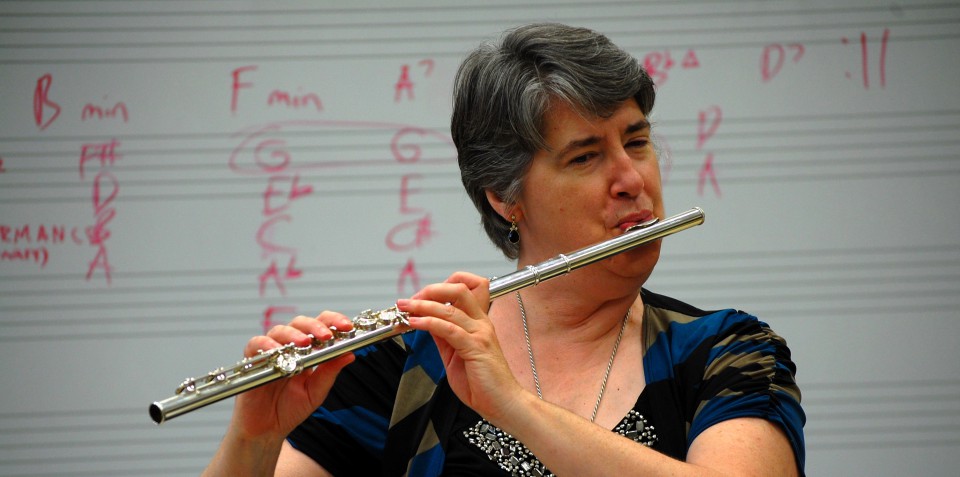Tracking down the origins of Kiss-n-Roll
Frankly, I have been puzzled why the Kiss-n-Roll approach to flute embouchure is still a thing among school music educators. There is so much information available, flutists teaching flute methods classes and so many flutists who care deeply about how students learn flute embouchure discussing how to correctly teach students how to relate to the flute that it seems amazing that the Kiss-n-Roll is still around at all. People like Patricia George, Phyllis Avidan Louke and Jennifer Cluff have written and blogged about teaching basic flute embouchure. On this blog, I’ve written on this very topic at least three times in the year and a half I’ve been doing it.
Then last weekend, I had a very interesting insight into the pervasiveness of this phenomenon. While I was up in Wisconsin doing clinics and presenting at a flute festival, I had an enlightening discussion with a band director at one of the schools. His main instrument is trombone. He showed me what he understands about teaching flute embouchure. When he demonstrated, he rolled the flute down from the middle of his lips and made a sound typical of a beginner to intermediate flute player. I asked where he had learned the Kiss-n-Roll. He said he thought no one in particular had told him to do it that way, it just seemed the easiest way to relate to the flute. And that is when the lights went on for me. He is trying to relate to the flute lip plate the way he knows how to relate to his trombone mouthpiece! Doing this makes the flute seem less foreign, more familiar to what he already knows and can do well.
Here is the harsh reality, folks. Rolling the flute down on the lip into playing position is never going to help your students develop a truly characteristic flute tone. Why? Because it places the flute too high on your lip to get the maximum resonance out of the instrument. The transit time (time from when the air exits your lips to when it hits the strike edge of the embouchure hole) is too short. The sound will always be small, often windy, sharp and unfocused.
So what happened when I asked the band director to try bringing the flute up into position from underneath as I’ve discussed numerous times on this blog? Bingo! He instantly had a stronger, more focused flute sound than I think he had ever achieved in the past. Granted, it took him out of his comfort zone as far as how to relate to the flute. The difference in the sound he made was a huge improvement.
Parting words for today? You cannot relate to the flute embouchure plate in the same way you relate to your brass mouthpiece. There is not going to be direct contact with your lips. Bring the flute up from below and learn to feel the inside edge of the embouchure hole about where your lip and chin meet (this can vary with the size and thickness of your lips). In order to get the best sound out of a flute, you need to let go of your attachment to the feeling of having contact with the middle of your lips. When you understand this and can explain this to your students, you will see a huge difference in the tone quality your students can achieve. The flute is a completely different animal from any other winds or brass. To achieve a characteristic tone, it is necessary to learn to relate to the flute on its own terms.
If you find these entries useful, please subscribe, share with your colleagues and come back regularly for more flute tips. Feel free to comment. If you have a topic you would like to see explored more fully, you can contact me via IM/Messenger on Facebook or email me at dr_cate@sbcglobal.net. For information about clinics and workshops click here.

Pingback: Favorite blog posts, March 2016 | Bret Pimentel, woodwinds